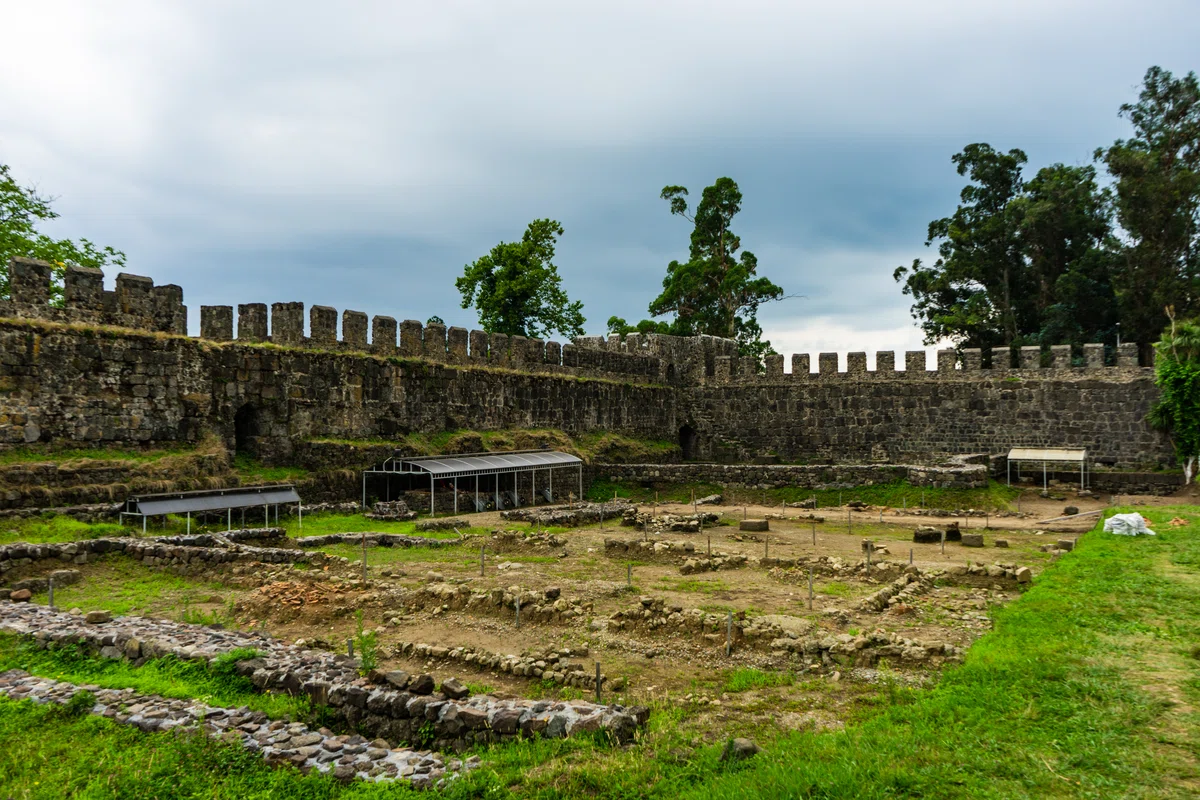
Cultural heritage in one of the ancient cities of Georgia. The natural beauty of Adjara. The ancient treasure of Adjara is the Gonio Fortress.
Georgia is a country with an ancient and fascinating history. To visit her memoirs means to touch something eternal. In the blog "MadLoba" you will find detailed information about the ancient treasure of Adjara - Gonio fortress. Here you will find real reviews and impressions about what you saw, a short historical background.
Visit the historical monument of Adjara⬇️
Adjara is known for its beaches and natural beauties. But sights of Georgia in general, including the Adjara region, they are diverse. There are also historical monuments here. For example, the ancient Roman Gonio-Apsaros fortress. It attracts connoisseurs and connoisseurs of history, tourists from around the world.
There are suggestions that even before the construction of the fortress, the ancient Greek city of Apsaros stood on this site. Earthen ramparts erected 4-5 thousand years ago were found outside the walls of the fortress. There are also some other objects of ancient times, including Greek coins.
The history of the Colchian Kingdom, which occupied the territory of present-day western Georgia, is closely connected with Ancient Rome and Greece. Legends and legends tell about it.
According to the myths about the Argonauts, the name Apsaros comes from the name of the Colchian king Apsirt, who was killed by Jason. The body of the deceased was cut into pieces and thrown into the sea, but the remains were washed ashore. Presumably, they were buried here.
Although etymologists (in particular, I. Javakhishvili) claim that the name Apsar means "Abkhazian" in translation.
History of the fortress
Gonio Fortress — the oldest citadel on the territory of Georgia. It was built by the Romans in the 1st century AD. The Latins needed reliable protection from external enemies, which is why powerful walls were built at that time. Their height is about 7 meters, and their thickness is 2 meters. The citadel was built in the form of a quadrangle.
The fortress has an extremely convenient location — at the entrance to the gorge of the Ajaristskali and Chorokhi rivers. It served as a defense against the attacks of invaders from the north, from the interior of Georgia, and from the Black Sea.
Some of the walls are quite well preserved to our time in the form they were built two millennia ago. You can climb them and walk around, looking around the neighborhood. The views are lovely. Locals claim that these are the most beautiful places of Georgia.
Stone walls were laid, traces of construction dating back to different eras are clearly visible. At the very bottom is a masonry of hewn stone blocks. And above you can see the cobblestone masonry, this is already the Ottoman period.
22 watchtowers and 4 entrances were built around the perimeter of the fortress walls. Only 18 towers and one entrance have been preserved.
A full-fledged city has grown up inside the fortification. There were residential quarters, gardens, legionnaires' barracks and armories, gladiatorial fights were held.
The fortress passed from the Romans to the Byzantines.
In the 13th-14th centuries, the Genoese owned the fortress and also carried out construction or restoration. Therefore, in some sources, the construction of the fortress is attributed to the Genoese. They are also associated with the name Gonio — Genuasi, it appeared in the 14th century.
And in the 16th century, the fortress and the city came under the rule of the Ottoman Empire.
The change of power affected the architecture of the ancient citadel, elements of the Muslim and Christian faith were combined here.
As a result of Russia's victory in the Russo-Turkish War in 1878, Adjara, along with other regions of Georgia, fell under the patronage of the Russian Empire.
From ancient times until the second half of the 20th century, the fortress served as a military base.
In 1974, a large antique treasure was found in the fortress — chests with jewels and gold coins. After that, the military left the fortress, and research work began.
Since 1994, the territory of the fortress has been a museum-reserve open to visitors. Archaeologists and historians from all over the world continue their scientific work.
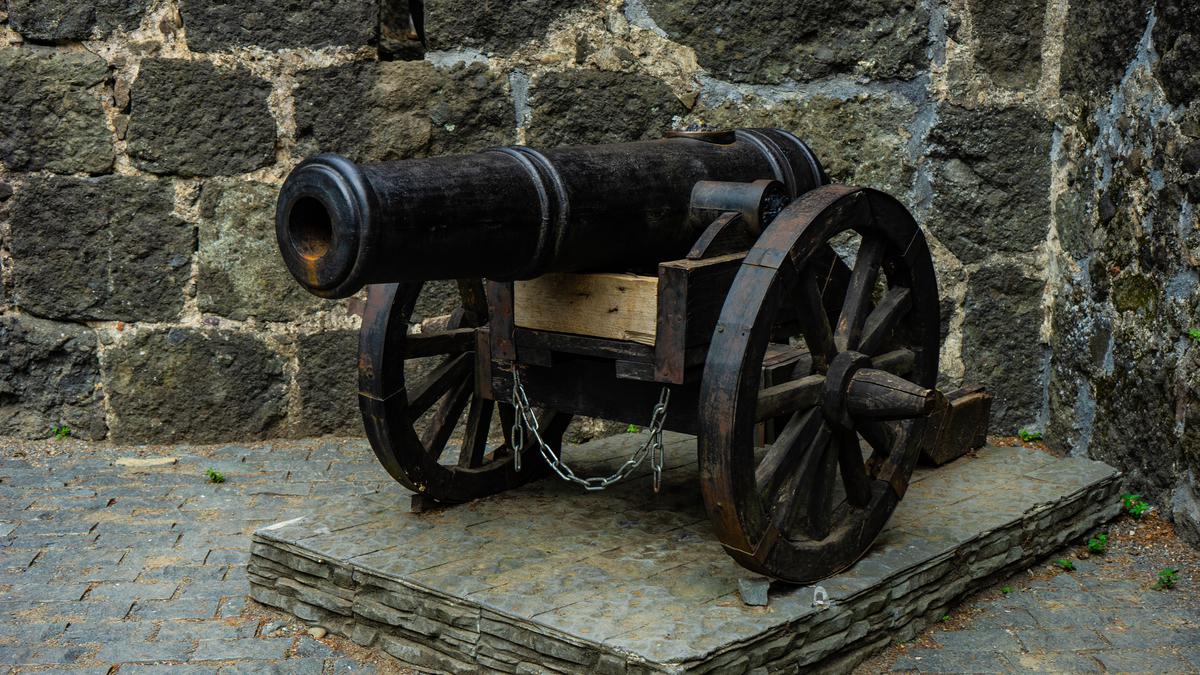
Gonio Attractions
A unique complex dedicated to the ancient and medieval periods of the fortress history has been created in Gonio. There are not many ancient buildings here. Those that have survived prove that Gonio was a well-developed city.
It had a large hippodrome, a theater and Roman baths at that time. During the Ottoman Empire, the baths were converted into a Turkish hammam.
Now only the foundations remain of them. In places, a mosaic of dark and light stones in the form of geometric ornaments has been preserved on the floor.
A place was allocated in the fortress for training war horses. This is confirmed by the findings of archaeologists: horse harness, uniforms and helmets of Roman soldiers.
In some places, the stone pavement, the remains of the city sewer system have been preserved. There are wells in fairly good condition, from which water was supplied to thermal baths and rich houses. The arms of the viaduct have been partially reconstructed, which can be viewed and admired by the scale of the engineering ideas of the ancient Romans.
During the siege of the stronghold, the enemies tried to destroy the water supply and leave the defenders without water. But some of the pipes were safely hidden, they could not be found.
Archaeological excavations are constantly being carried out on the territory of Gonio. A small historical and architectural museum has been created, where some of the things found are kept. The main part of the artifacts is in the Batumi Archaeological Museum.
Tours of the citadel usually begin at the museum. In addition to valuable finds, here you can see the reconstruction of the barracks of Turkish soldiers and other models that clearly show the appearance of the fortress in different eras.
In the pavilion near the museum there are medieval combat vehicles — a ballista and a catapult, recreated according to ancient drawings.
The fortress still holds many secrets and riddles. For example, it is assumed that the Apostle Matthew is buried here. There is no data confirming or refuting this fact. According to other versions, the body of the apostle rests in the city of Sorrento (Italy) or in Kyrgyzstan, on the shore of Issyk-Kul.
The Georgian government and the official church authorities forbid excavation and opening of the sarcophagus, so as not to create a religious conflict.
A marble gazebo was erected over the burial. And nearby there is a platform where solemn services are held.
The presence of the Ottomans in the fortress is indicated by the ruins of the mosque in which the Turkish wars prayed.
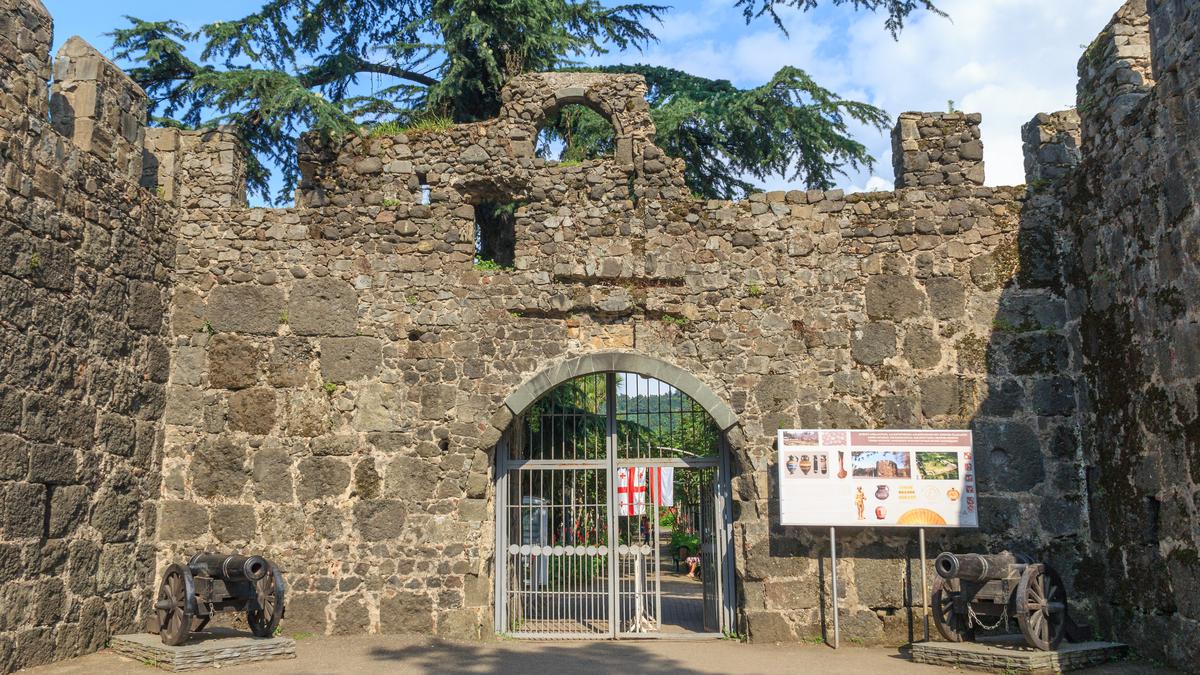
How to get
From Batumi to Gonio is about 15 km. The ancient bastion stands right next to the road leading from Batumi to the village of Sarpi and the Turkish border. You can get there by public or rented transport.
- Bus No. 16 runs from the Tbilisi Square of Batumi, the fare in which costs 80 tetri (0.8 lari). The stop where you need to get off is called "Apsaros Highway".
- A minibus going to Sarpi, the fare in it is 1 GEL (≈ 0.3 $ or 23 rubles).
- Taxi ride it will cost 10 lari (≈ 3$ or 230 rubles). It is better to order a car in advance, otherwise the price may be much higher.
- A visit to the fortress is included in the program sightseeing tour of mountainous Adjara. The whole trip will take about 7 hours, the cost is 25 lari per person (≈ 7$ or 600 rubles). 40 minutes are allocated for acquaintance with Gonio.
- You can come from Batumi by bicycle, but entry to the territory of the fortress is prohibited. You will need to find a place where to "park" your two-wheeled vehicle.
By the way, there is a good parking lot near the fortress.
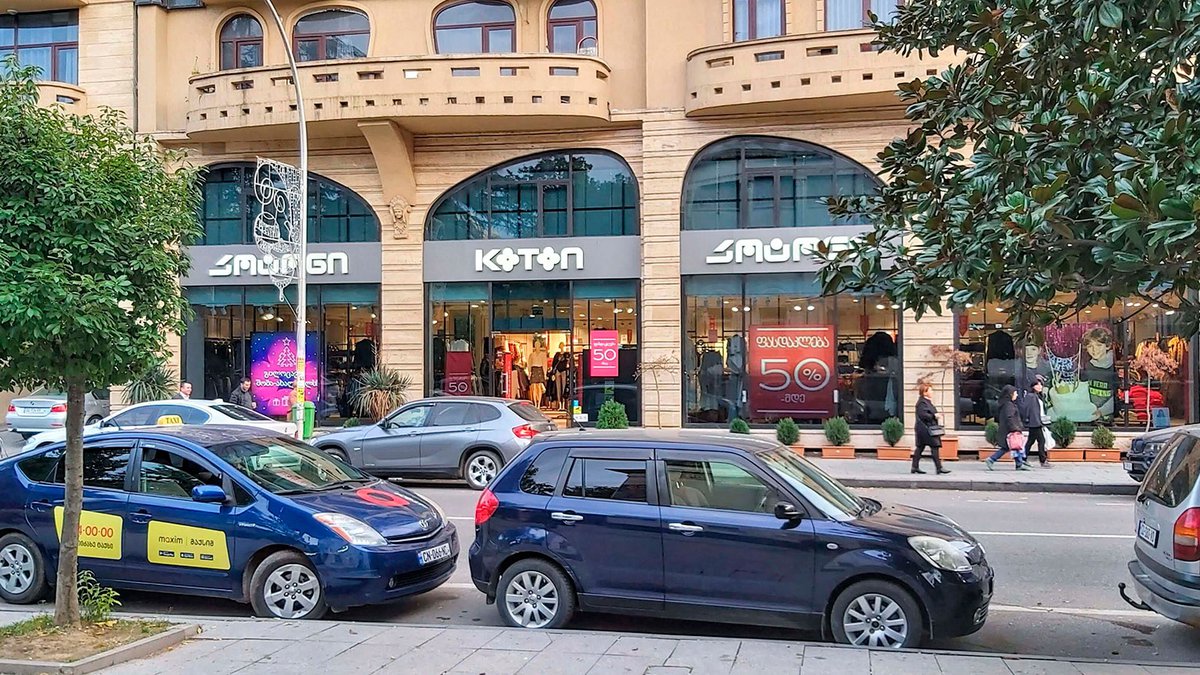
Useful information and tips
Since July 2025, entrance tickets and an audio guide to Gonio can be purchased online - on the website tkt.ge.
Ticket price: 2 GEL for children and 8-10 GEL for adults. This is especially convenient during the tourist season, when there may be queues at the entrance.
- All objects are provided with information in Georgian, Russian and English. The time of acquaintance with the ancient structure is limited only by the working day.
- You can take an audio guide for two for 5 GEL.
- A walk with a guide lasting an hour and a half is 10 GEL, regardless of the number of people in the group.
- If you travel in the summer, take care of your headgear, take water with you.
- There are few shady places in the fortress, although alleys are equipped, there are benches where you can sit down and rest.
- It is better to go here in the morning or in the late afternoon, when the sun will not be too hot. The fortress is open from 10:00 to 18:00.
If you plan to climb the walls, you need comfortable shoes and clothes.
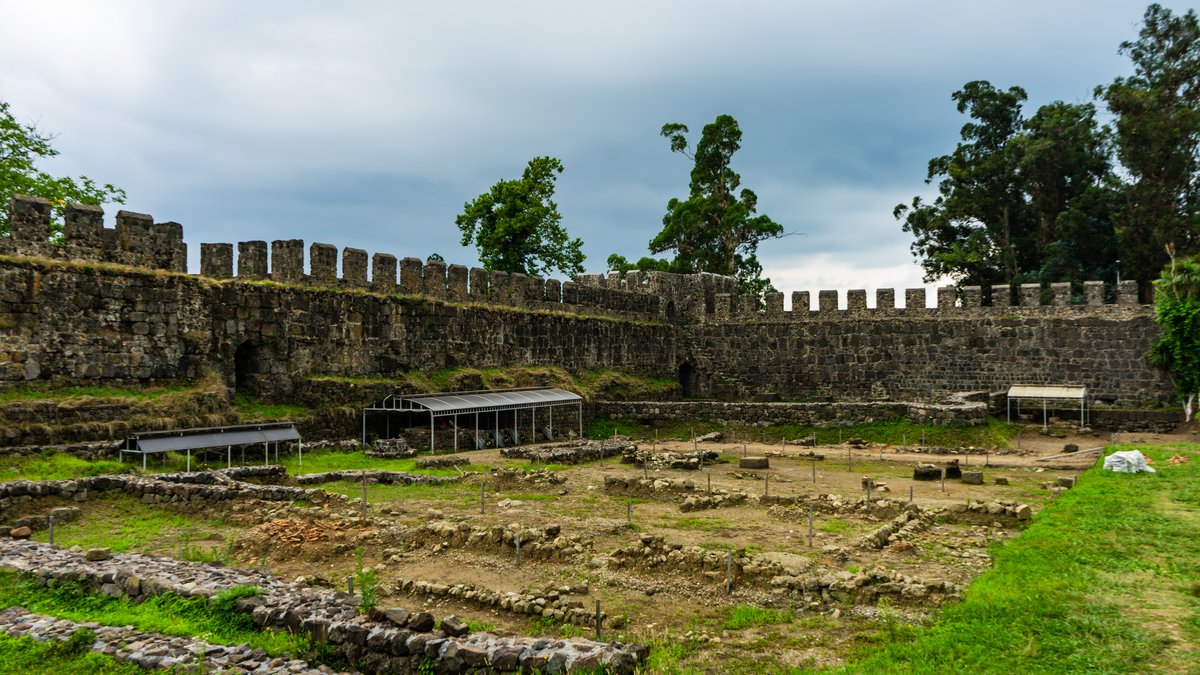
Pay attention to the information signs
In some places, climbing the walls is prohibited. Time is merciless to them, and tourists often contribute to the destruction of historical structures.
Perhaps because of the proximity to Batumi, Gonio-Apsaros Fortress very popular with tourists. On the territory of Adjara, this is the largest historical object with such a centuries-old history.
When making a travel itinerary, choosing what to see in Georgia, pay attention to the ancient citadel. It's really worth watching it.
Six kilometers from the fortress are waterfall and sculpture of St. Andrew the First-Called.
In addition, there is a clear sea here. In the summer season, you can combine a beach holiday with a tour of historical attractions and the most beautiful natural monuments.
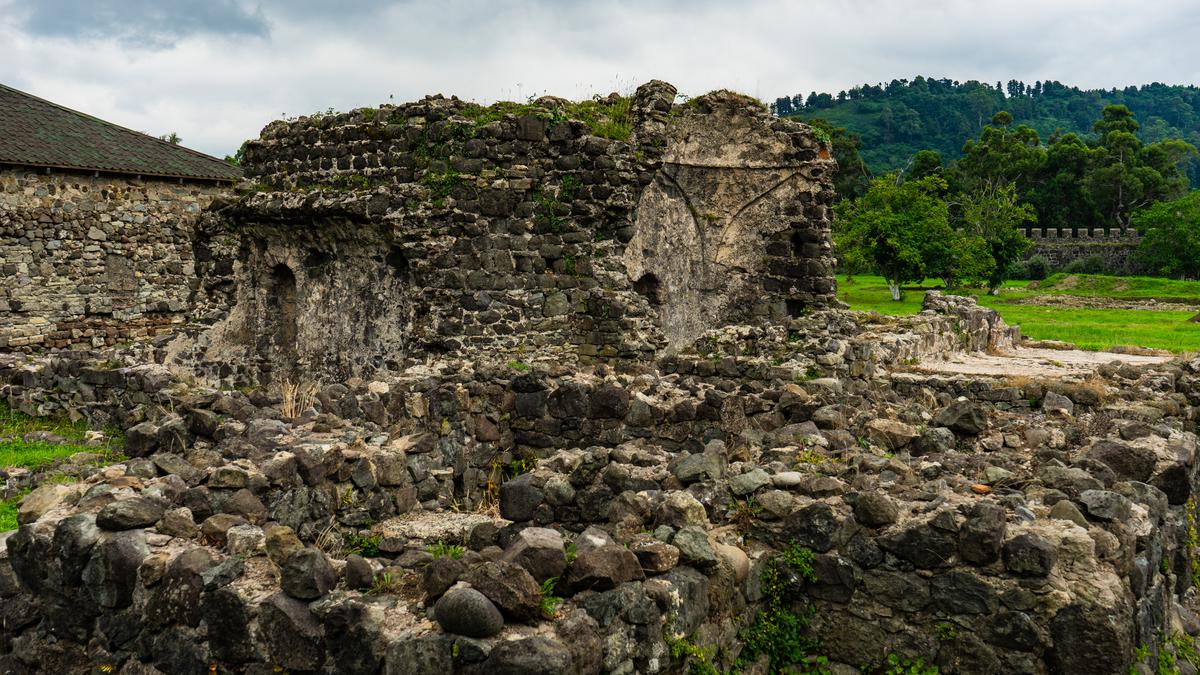














29 comments
Log in to leave a comment